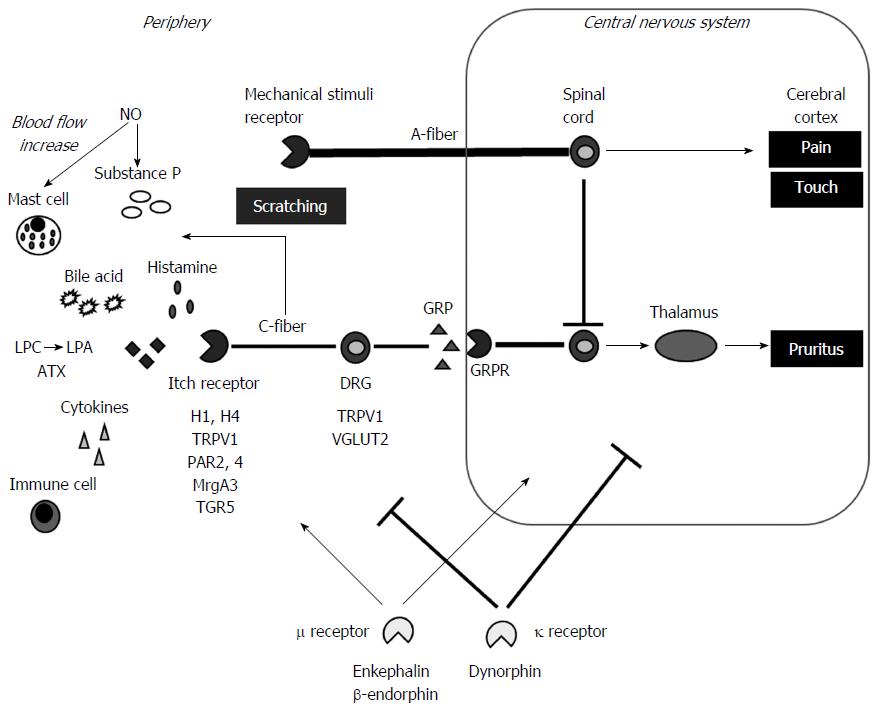Copyright
©The Author(s) 2017.
World J Gastroenterol. May 21, 2017; 23(19): 3418-3426
Published online May 21, 2017. doi: 10.3748/wjg.v23.i19.3418
Published online May 21, 2017. doi: 10.3748/wjg.v23.i19.3418
Figure 1 Mechanism of itch transmission in cholestatic conditions.
Pruritogens such as histamine, bile acids, bile acid metabolites, LPA and cytokines act on itch receptors. Itch signals are transmitted through C-fibers to the cerebral cortex. The μ and κ opioid receptors are expressed in both the central nervous system and the periphery nerve and act to promote and suppress pruritus, respectively. Signals generated by mechanical stimuli compete with itch signals. Scratching induces C-fibers to secrete substance P, and acts as a pruritogen. NO: Nitric oxide; LPC: Lysophosphatidylcholine; ATX: Autotaxin; LPA: Lysophosphatidic acid; GRP: Gastrin-releasing peptide; GRPR: Gastrin-releasing peptide receptor; TRPV1: Transient receptor potential vanilloid receptor subfamily V1; PAR: Protease-activated receptors; MrgA3: Mrg subtype A3; TGR5: G-protein-coupled bile acid receptor 1; VGLUT2: Vesicular glutamate transporter 2.
- Citation: Tajiri K, Shimizu Y. Recent advances in the management of pruritus in chronic liver diseases. World J Gastroenterol 2017; 23(19): 3418-3426
- URL: https://www.wjgnet.com/1007-9327/full/v23/i19/3418.htm
- DOI: https://dx.doi.org/10.3748/wjg.v23.i19.3418









